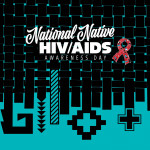Charitable donations from wealthy individuals, foundations and businesses have long played a vital role in fighting the HIV epidemic, but does philanthropic funding reach community-based groups (CBOs) in the most effective way possible? How much of the funding even makes it to those nonprofits anyway? A new report and related analysis by Funders Concerned About AIDS (FCAA) explore these very issues.
Titled Last Mile Funding: Improving Practice in Philanthropic Funding of the Community Action on AIDS, the 39-page report is available to read and download (for free) .
FCCA researchers found that in 2016, philanthropic groups gave about $680 million to HIV-related causes. Here’s where the money went:
44 percent ($306 million) was granted to civil society organizations (CSOs), meaning groups that are nongovernmental, nonprofit and not part of hospitals, universities, foundations or professional associations. Broken down further, CSO funding was disbursed as follows:
$85 million: local CSOs
$50 million: national CSOs
$11 million: regional CSOs
$160 million: international CSO.
31 percent ($209 million) was granted to academic/research institutions.
15 percent was disbursed among hospitals, government entities, individuals, United Nations technical partners, the private sector and professional and medical associations.
10 percent was granted to anonymous recipients.
You can view and download a related infographic here.
According to a an FCAA press release about the report, several themes emerged:
- CBOs noted high levels of engagement, an ability to provide feedback to funders and participation in the development of funder processes as driving increased effectiveness.
- The term “community” is not clearly defined nor are the wide range of organizations—funders, intermediaries, CBOs—involved in funding and enacting community action on HIV/AIDS.
- The priorities of funders and those of CBOs on the front lines of the HIV/AIDS fight have a significant amount of overlap.
- While there is no single blueprint for a funding model, there are many examples of practices that funders have developed to work more effectively with CBOs.
“Findings of this effort indicate that the best response to this challenge is for funders to understand best practices in supporting community-based organizations, to assess which of those they can undertake on their own, and where and when they need the assistance and expertise of others in implementing as many of those practices as possible,” write the report authors in their executive summary. “The findings do not suggest a one-size-fits-all approach, but rather that a diversity of funding mechanisms is often needed to meet the needs of diverse communities. Above all, they underscore the importance of dialogue and feedback with communities, and collaboration and self-evaluation for funders.”
The report and analysis were released to coincide with FCAA’s 2018 AIDS Philanthropy Summit, which took place November 5 and 6 in Washington, DC.







Comments
Comments